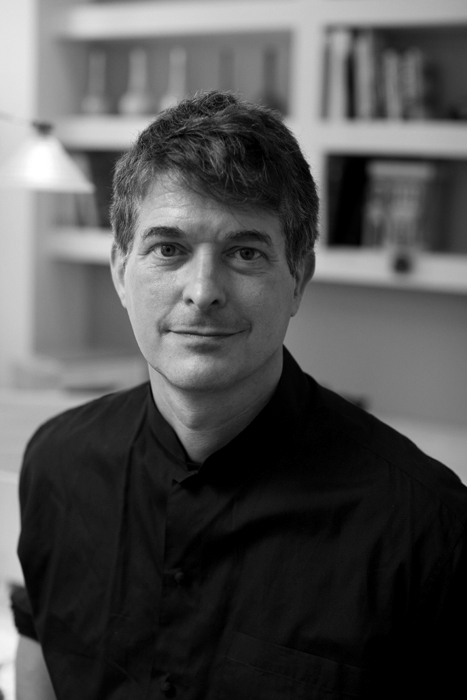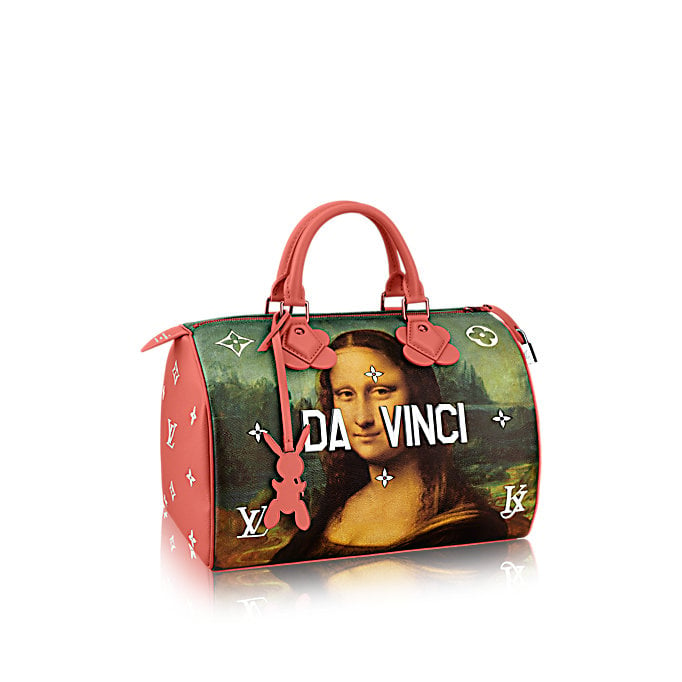Art World
The Gray Market: Why America Might Not Need Yet Another All-Star Biennial (and Other Insights)
A critical take on biennial bloat as Kansas City dreams big and the most Instagrammed museums in the world.

A critical take on biennial bloat as Kansas City dreams big and the most Instagrammed museums in the world.

Tim Schneider

Every Monday morning, artnet News brings you The Gray Market. The column decodes important stories from the previous week—and offers unparalleled insight into the inner workings of the art industry in the process.
This week, three developments that invite a wider and/or tighter look…
OPEN SEASON: On Monday, Missouri became home to the newest biennial hoping for major international attention. With the backing of state government agencies and local philanthropists, curator Dan Cameron will mastermind Open Spaces 2018: A Kansas City Arts Experience, a two-month bonanza of visual and performance art debuting in the Midwest’s barbecue capital in August 2018.
The project’s view is both outward- and inward-looking. On one hand, Cameron has expressed an interest in attracting visitors to, and coverage of, the city by partnering with globally recognized artists like Nick Cave and Jennifer Steinkamp. On the other, he also wants to engineer an event and an energy that can convince local talent it’s possible to build a viable practice in KC instead of migrating to traditional art capitals.
Both are admirable goals. But while I root for Open Spaces on a professional and personal level—my home town of Cleveland is attempting something similar with next year’s (possibly troubled) FRONT International Triennial—I’m beginning to wonder what all the new entrants to this field mean for the big picture.
Adding Open Spaces to the events listed in the Biennial Foundation’s online directory, I count 228 projects of this general stripe now active around the world. (For clarity, the directory includes biennials, triennials, quadrennials, and quinquennials, as well as less obviously timed initiatives such as Saigon Open City.) Of those 228 citywide or region-wide exhibitions, 22 are based in the US (including Prospect New Orleans, Cameron’s previous brainchild in this sector).
That’s a bulging grip of biennials and other big exhibitions. But it isn’t just the volume that gives me pause. It’s also the speed of their proliferation.
Admittedly, there’s a lot of haze around the exact growth rate, especially given the limited time I had to investigate this week. However, analyses by The Economist in 2012 and the Institute of Cultural Capital, Liverpool in 2015 both mentioned that there were just “over 100” biennials on their respective publication dates—which at least introduces the possibility that the number of city-spanning exhibitions could have doubled in the past two to five years.
That possibility seems crazier than making a major life decision based on consulting a baked potato, but it can’t be ruled out using the info at hand. (I emailed the Biennial Foundation to request data that would have helped clarify the year-on-year rise, but did not hear back by submission time.)
As usual, part of my worry stems from the comps. I can’t help but equate the biennial growth pattern to the nascent blow-up in the number of worldwide art fairs this century. According to Georgina Adam, we went from being asked to digest just three “main event” fairs in 1970 to 189 total fairs in 2011, with 121 of those new events spawning since 2005.
Nor did the bloat stop there. At the outset of 2015, Edward Winkleman tallied more than 220 international art fairs slated for that year, and “closer to 300” once he factored in fairs “that [did] not include any, or much, contemporary art.” That sounds less like an expanded art scene than a war of attrition.
To be clear, there may not necessarily be anything problematic about supersizing the biennial phenomenon. I remain skeptical about the prospects of most art fairs in the coming years, as I’ve written before, but biennials are inherently different events: far less frequent, significantly longer running, and generally better integrated with their host cities.
Still, the more biennials that fly out of the cultural hive mind, the lower the probability that any of the perceived beta-level events will draw a significant amount of visitors, particularly from among the art-world elite capable of moving the proverbial needle on a city’s fortunes.
That doesn’t mean Open Spaces 2018, or new biennials generally, can’t still be valuable additions to any city’s identity and economy. But it does suggest to me that nascent events of this type might be better served by taking a local or regional focus, not lusting after global grandeur. [artnet News]

The infamous sprinkle pool. Courtesy of the Museum of Ice Cream.
IDENTITY POLITICS: Early last week, Instagram generated a fair amount of press and a minor existential crisis among certain members of the art community by sending journalists a recap of their data about the app’s most popular locations in different categories—including the Most Instagrammed Museums, both in the US and worldwide.
The triggering element in this roundup was the by-now-infamous Museum of Ice Cream, which rated sixth on the American museum list and 10th on the global one. (Note: Instagram provided only the rankings, not the raw numbers they were based on.)
A variety of art-industry outlets and personalities portrayed the MOIC’s presence on the list as something between a con (it’s completely engineered for selfies!) to the downfall of western civilization (people care about it more than the Hirshhorn, the Guggenheim, and the 9/11 museum!).
Yet I think the alarmed voices mostly drown out an important point: The Museum of Ice Cream isn’t even a credible museum PARODY, let alone a credible museum. It contains no “scholarship,” no “educational materials,” no “curatorial program” to speak of—meaning not even any tongue-in-cheek approximations of these things.
Instead, it’s literally just a series of stage sets themed around frozen dairy and its accessories, titled by someone marketing-savvy enough to grasp the value in making any product sound higher-level than it actually is.
In that sense, freaking out over the MOIC’s performance against actual institutions in these top 10 Most Instagrammed Museum lists is like freaking out over the idea that one in 10 adults might consider the world’s biggest threat to be the extinction of pizza—without questioning why one of the surveyed “adults” looked an awful lot like three six-year-olds standing on top of each other’s shoulders inside a trench coat.
I’m not saying that we shouldn’t pay close attention to the ways social media is influencing how we evaluate, consume, and produce art. I mean, I wrote a book about it, and studies much more rigorous than these Instagram results have raised troubling questions on the subject recently (especially when the researchers framed the prompts in a particularly open-ended way).
At the same time, I also think that many older people in the art industry—and many older people in general—tend not to give young people enough credit in situations like this. Just because a ton of visitors paid money for an hour of stupid fun and a few selfies at the MOIC doesn’t mean that the trip rewired their brains into believing that the epitome of culture is a room with giant faux popsicles “melting” into the walls and floor.
Case in point: From the Louvre to MoMA to the British Museum, the other 19 entries on Instagram’s museum lists are all eminent, legitimate institutions that even the most curmudgeonly observer would be hard-pressed to complain about. It’s not as if everyone under the age of 40 is out here on their phones trying to tag Disneyland as “The Museum of Mickey.”
So let’s not allow these Instagram results to convince us that the arts are being dragged into the depths by a giant sewer rat called social media. At least, not just yet, and not based on what essentially amounts to a press release from a tech company.
Yes, people dig spectacle in art. But Instagram’s overly forgiving—if not intentionally provocative—museum rankings don’t convince me that we’re digging a mass grave for the life of the mind yet. [ARTnews]

As rich artists get richer… Jeff Koons’s “Masters” Speedy 30 bag for Louis Vuitton. Image courtesy Louis Vuitton.
HAT IN HAND FOR HISTORY: Finally, Melanie Gerlis reported in The Art Newspaper on a more legitimately worrying trend reflected in data: the declining income of the average unrepresented artist. Or so we think.
According to “The Artist Income Project,” one component of a new study released by online artist-to-collector sales platform Artfinder, “artists are getting poorer” in both the US and UK. Artfinder compared its own anonymous survey of 1,523 independent artists to a 2013 study of 1,061 of their peers by a-n, “the artist information company” (which, side note, I can’t seem to find online anymore).
The headline finding sounds bleak: While 72 percent of the UK artists earned less than £10,000 annually from selling their work four years ago, that proportion rose to an even grislier 82 percent in Artfinder’s sample today.
Their US counterparts reportedly fared only slightly better. Per Artfinder, 72 percent of American artists in the sample reported yearly income less than $10,000 from actual artwork sales.
These are all potentially valuable data points. And yet, they also speak to the enormity of what we still don’t know.
On the micro level, I’ll assume that we don’t have a 2013 comp for American artists because the a-n study only went out to Brits. However, I don’t know for sure because, when I tried clicking through Artfinder’s methodology section, both links to that study were deader than fried chicken.
The macro picture is a much bigger black hole, though. Comparing 2013 to 2017 certainly covers a meaningful time span. But our understanding of the problem would be drastically enriched if we had trustworthy year-on-year information for 2014-16—and ideally, similar information dating back decades. Unfortunately, we don’t.
To be clear, that’s not Artfinder’s fault. Our empirical knowledge about the art market has to progress from somewhere, and limited as it is, the Artist Income Project provides a nice handhold.
Still, I’m sensitive (perhaps overly so) to the possibility that the financial struggles of today’s artist may only be incrementally more painful than those of their predecessors.
For instance, in her recent clear-eyed piece on the danger of superstar economics to the art market, Clare McAndrew cited evidence suggesting that the winner-takes-all dynamic—a dynamic that analysts like me so often invoke to explain the challenges faced by most artists—is hardly a new phenomenon. In fact, the problem appears to have been at work in the field as far back as 1920.
Were close to 82 percent of artists earning less than the equivalent of £10,000 annually back then? It’s impossible to say in the absence of more consistent—and more rigorous—research. But hopefully the growing awareness of this smoking crater of knowledge will mean that we’re having a somewhat different conversation in another four years, let alone another 50 or 100. [The Art Newspaper]
That’s all for this edition. ‘Till next time, remember: Sometimes stepping back is just as valuable as leaning in.